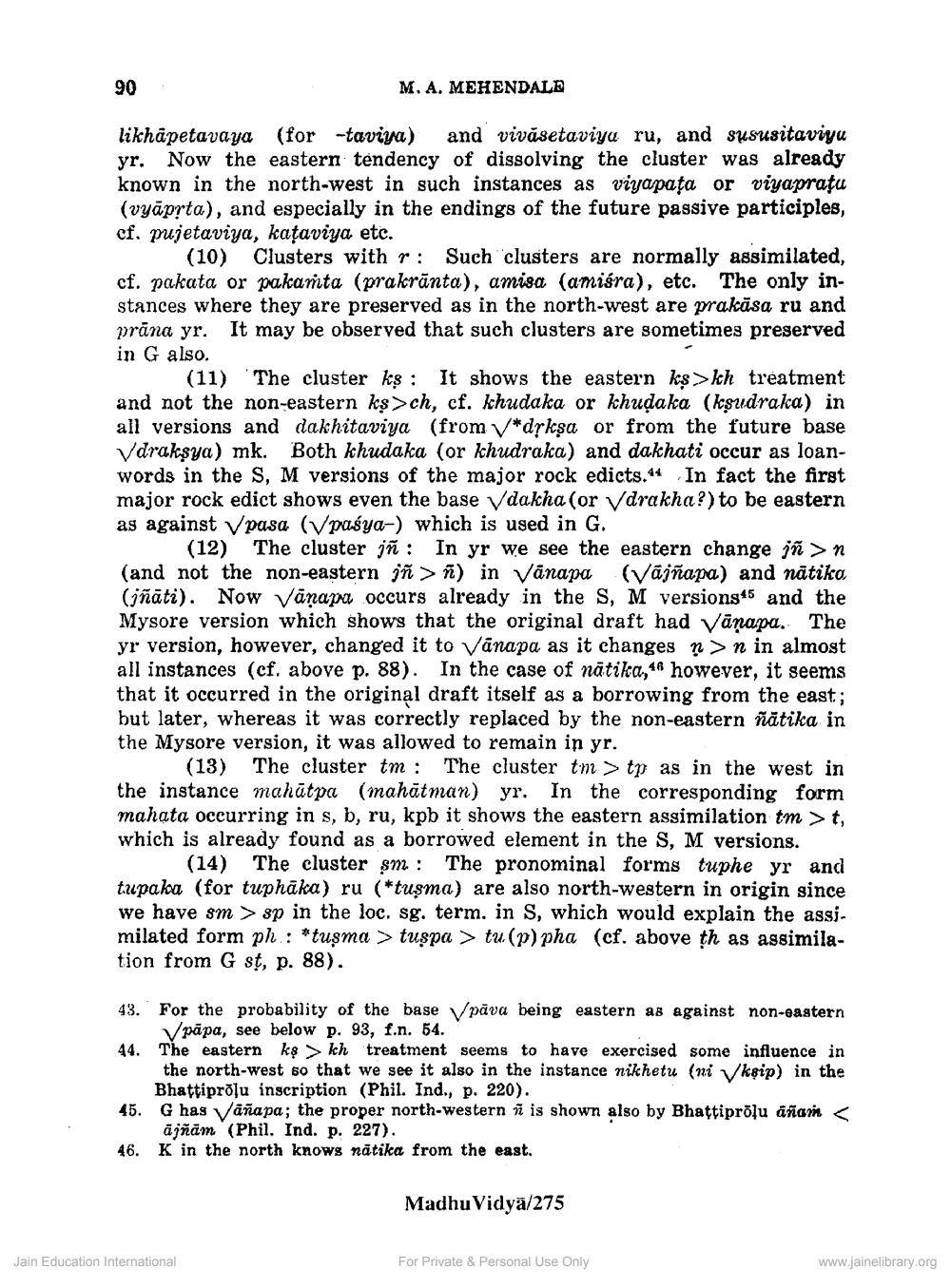________________
90
M.A. MEHENDALE
likhõpetavaya (for -taviya) and vivásetaviya ru, and sususitaviya yr. Now the eastern tendency of dissolving the cluster was already known in the north-west in such instances as viyapata or viyapratu (vyāprta), and especially in the endings of the future passive participles, cf. pujetaviya, kataviya etc.
(10) Clusters with r: Such clusters are normally assimilated, cf. pakata or pakamta (prakrānta), amisa (amiéra), etc. The only instances where they are preserved as in the north-west are prakäsa ru and prāna yr. It may be observed that such clusters are sometimes preserved in G also.
(11) The cluster k$: It shows the eastern ks>kh treatment and not the non-eastern kş>ch, cf. khudaka or khudaka (ksudraka) in all versions and dakhitaviya (from v*dykşa or from the future base Vdraksya) mk. Both khudaka (or khudraka) and dakhati occur as loanwords in the S, M versions of the major rock edicts.44 In fact the first major rock edict shows even the base Vdakha (or V drakha?) to be eastern as against v pasa (V paśya-) which is used in G.
(12) The cluster jñ : In yr we see the eastern change jn>n (and not the non-eastern ñ > ñ) in Vanapa (Vājñapa) and nātiko (jñāti). Now Vānapa occurs already in the S, M versions and the Mysore version which shows that the original draft had Vänapa. The yr version, however, changed it to Vanapa as it changes n>n in almost all instances (cf. above p. 88). In the case of nātika, 48 however, it seems that it occurred in the original draft itself as a borrowing from the east; but later, whereas it was correctly replaced by the non-eastern nätika in the Mysore version, it was allowed to remain in yr.
(13) The cluster tm : The cluster tm > tp as in the west in the instance mahātpa (mahātman) yr. In the corresponding form mahata occurring in s, b, ru, kpb it shows the eastern assimilation om > t, which is already found as a borrowed element in the S, M versions.
(14) The cluster sm: The pronominal forms tuphe yr and tupaka (for tuphāka) ru (*tuşma) are also north-western in origin since we have sm > sp in the loc. sg. term. in S, which would explain the assimilated form ph.: *tusma > tuspa > tu (p) pha (cf. above th as assimilation from Gst, p. 88).
43. For the probability of the base Vpäva being eastern as against non-eastern
pāpa, see below p. 93, f.n. 54. 44. The eastern ko kh treatment seems to have exercised some influence in
the north-west so that we see it also in the instance nikhetu (ni kşip) in the
Bhattiprolu inscription (Phil. Ind., p. 220). 45. G has Vañapa; the proper north-western v is shown also by Bhattiprāļu añan
ājñām (Phil. Ind. p. 227). 46. K in the north knows natika from the east.
Madhu Vidyā/275
Jain Education International
For Private & Personal Use Only
www.jainelibrary.org




